
Don’t say “ooh!”, say “aah!!” for this design is one of the best-looking wetas you’ll see. This print celebrates the recent rediscovery of the Bluff weta, New Zealand’s insect dinosaur that can be found in scree and on rocky bluffs of the Kaikoura ranges, Mt Somers in mid-Canterbury and on both sides of this t-shirt.
This design features a twice life-size pixel painted portrait of the Bluff weta on the front with the option of another print on the back. The Bluff weta was until recently thought to be lost to history, but it turns that it roams free in the scree and rocky bluffs of the Kaikouras and Mt Somers. The grey marle fabric of the shirt is the rocky texture of a mountain bluff for a comfortable fit. The design is also available on a range of colours, short and longsleeve tees for women and kids.
Because the colours of this design are earth toned and the weta is casting a shadow, the best colours for the shirt are on greys and earth-toned hues. The lighter toned backgrounds help create the 3D effect, the illusion the weta is in three dimensions standing on the surface of a t-shirt.
Purchase Options: Shop Locally or Internationally
Shop by ordering here to have it locally printed in Christchurch and DTF heat-pressed right here by the designer, Shaun Waugh, in New Brighton, or shop online at our NZ based and international DTG printing partners. (Use code: “PERFEC” for 5% off your international store purchase.)
Prices for Shirts Printed by the Artist in New Brighton:
- Teeshirt: $48 plus shipping
- This design is also available on longsleeve tees for men, women and kids
- Mens/Unisex longsleeve tee: $58 plus shipping
- Shipping is via Courier Post, price starts at $8 for 1 adult shirt, $10 for two or more.
International customers will be charged the actual shipping cost based on the weight and the destination of their order. As a guide a Large Surface Active 185 gsm t-shirt weighs 130–150 grams.
Alternatively our t-shirts are available for purchase at our stall at New Brighton Seaside Market on Saturdays, and at Brighton Gallery and The Creatives Edit in New Brighton Mall.
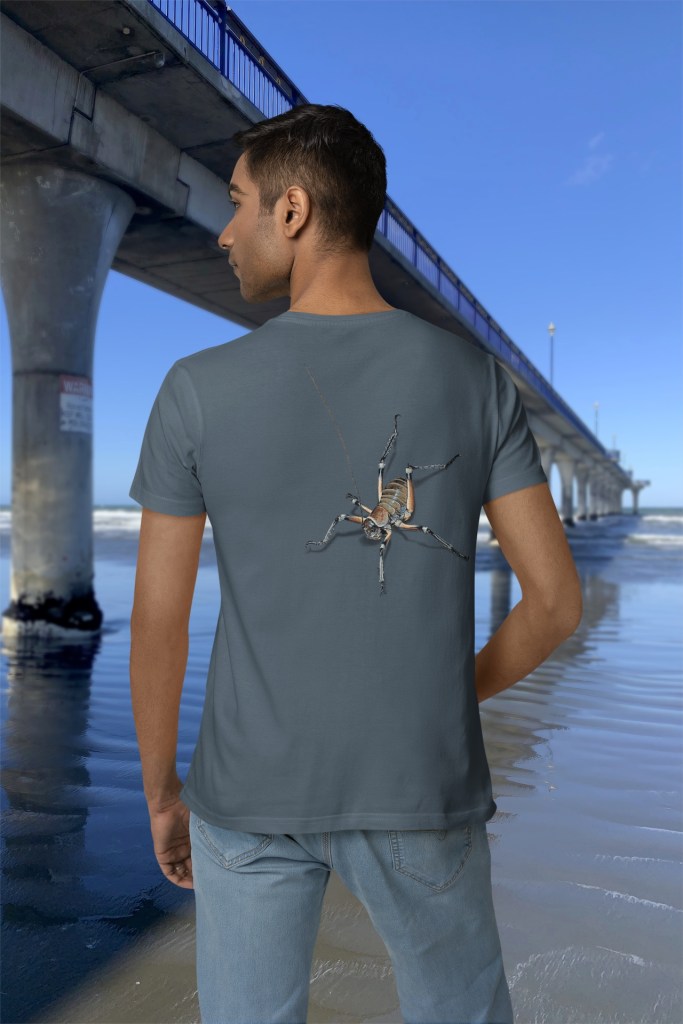
The Design Inspiration: Great New Zealand Wildlife Photography
The inspiration for the design came from superlative wildlife photographer Rod Morris. Chrissie and I visited Rod’s image library in Dunedin back in the 90s to find slides that he had cherry-picked as having the potential to be developed into hand-separated wildlife art for screenprinting.
The Art of Reduction: Simplifying and Separating the Colours Involved Down to Creating Just Six Stencils, Each Representing a Single Colour Used in the Original Screen Print
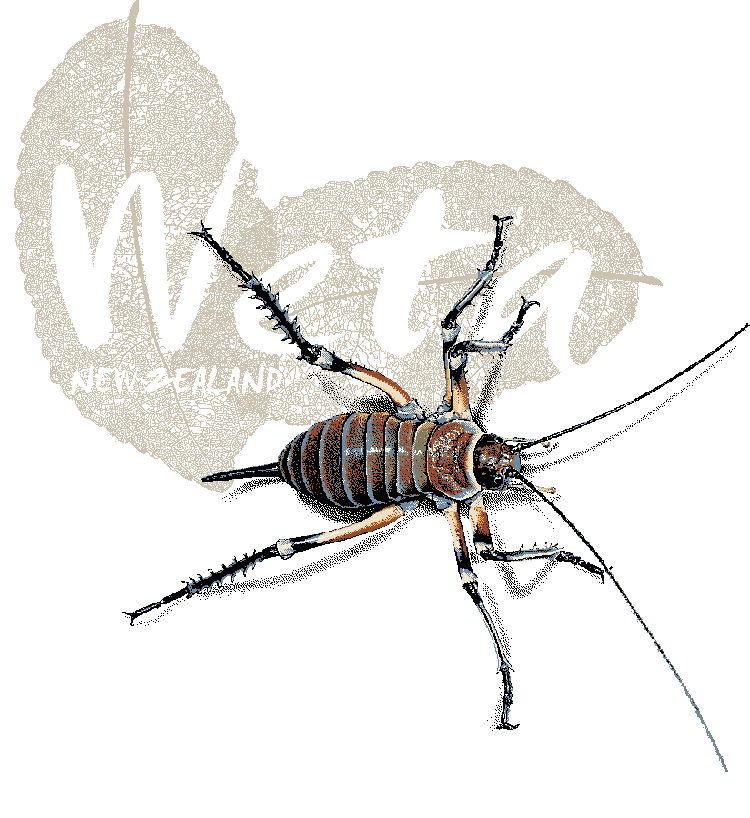
- From Millions of Colours to Six: To simplify the pair of weta photos colour palette I launched Photoshop and opened my weta photos, then, relying on meticulous handwork I cut away the weta from their backgrounds and airbrushed their cast shadows.
- Choose Final Reproduction Size For Screenprinting: The resolution of the bitmap used to output the image must be sufficiently low resolution to enable single pixels of the final pixel painting to be able to be printed. The thread count, threads per cm, or denier, of the screenprinting screen used determines the maximum resolution or pixels per cm that can be printed. In simple terms a single pixel must be tuned to, no smaller than, the size of the gaps between threads in the mesh.
- Convert to Indexed Colour, Posterise: With careful selection this reduces the extensive colour palette range of the referece image to a limited pallette. Using the posterise filter helps create guides for pixel painting larger flat areas of colour.
- Use the Magic Wand Selection Tool: To accurately identify and isolate the specific colour hues, and tones of shadow and light in the reference photograph. Cut each separate colour onto its own layer
- Manual Selective Colour Adjustment: The layering of the colours in the Art down to four colour hues plus black and white corresponds to each separate stencil to be used to create a single-colour layer on the final print. I discovered Photoshop automatically did help me build up the image one colour at a time, in a layered photoshop document, however the look of the computer separated weta images lacked finesse.
- Colour Separation Finesse: Using the original image as reference I used the mouse as an electric pencil to first create a black keyline drawing of the weta which I then used as a guide to help me carefully, in layers, manually “colour in” the two weta as pixel paintings.
- Photolitho Platemaking Positives: The final set of registered mylar film positives for photo stencil making were output from a high resolution digital platemaking image setter.
- A Screen Printer’s Palette: The final set of desired colours were manually mixed using a Pantone Colour Formula Chart using the colour layers in the Photoshop pixel painted document as a guide.
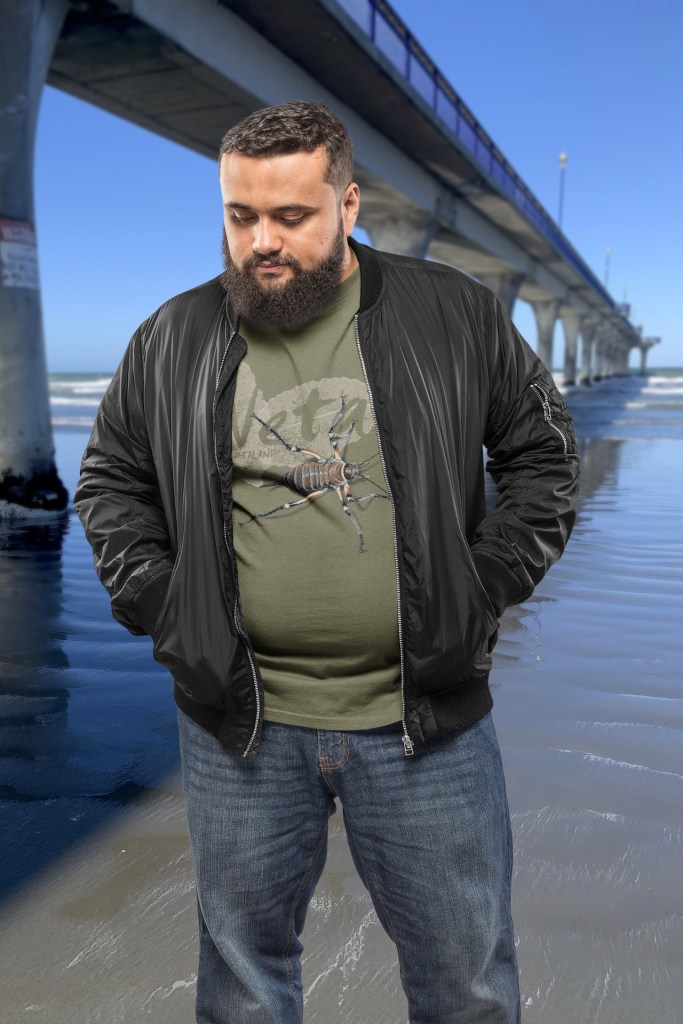
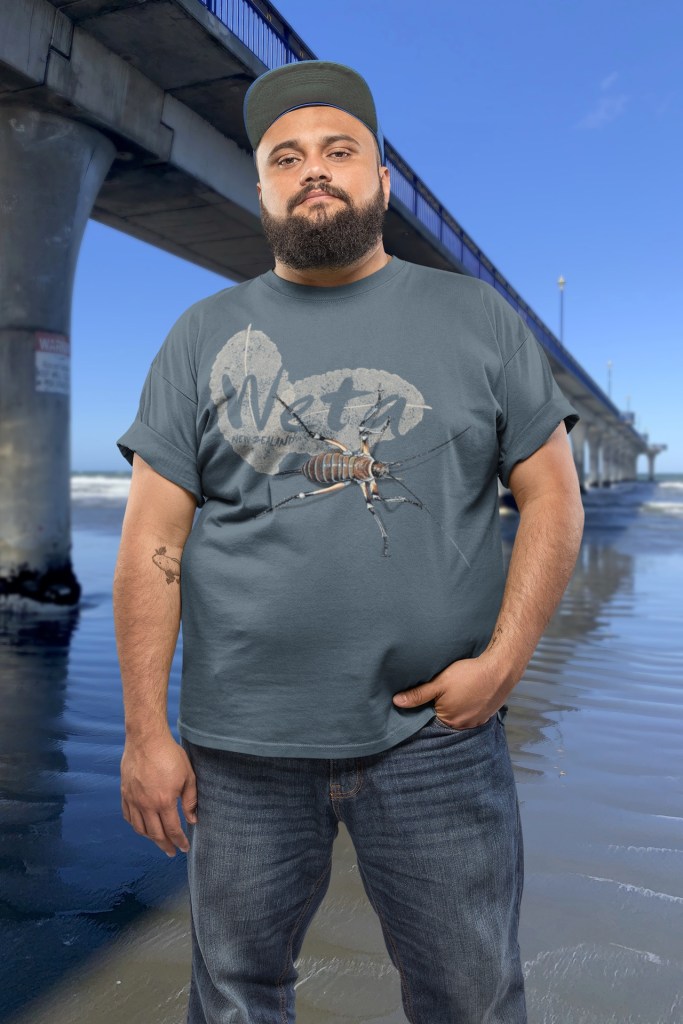
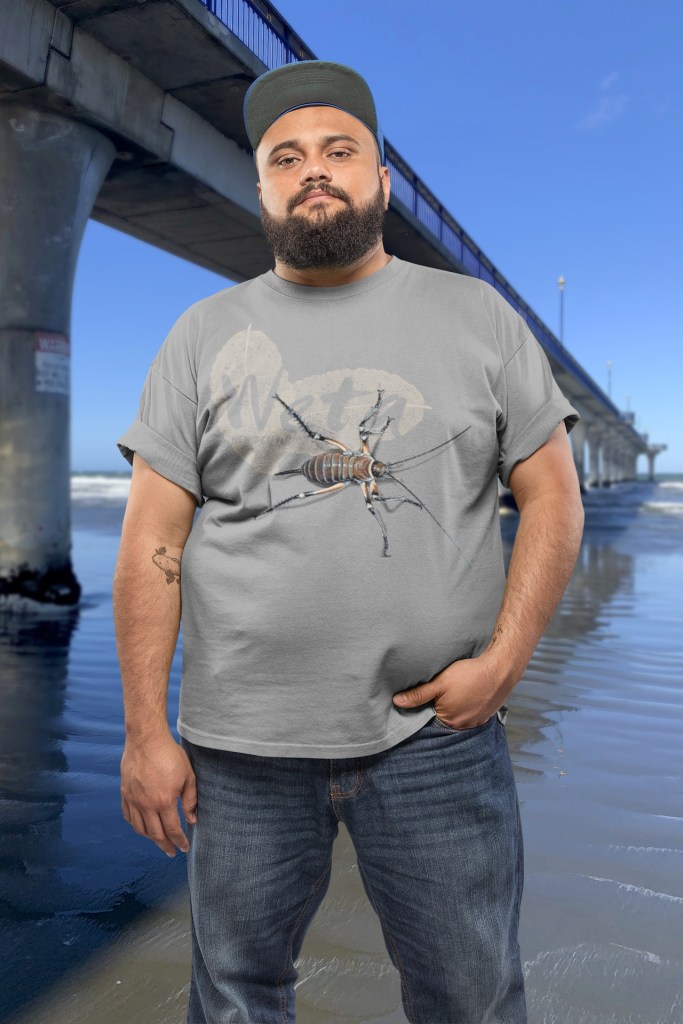
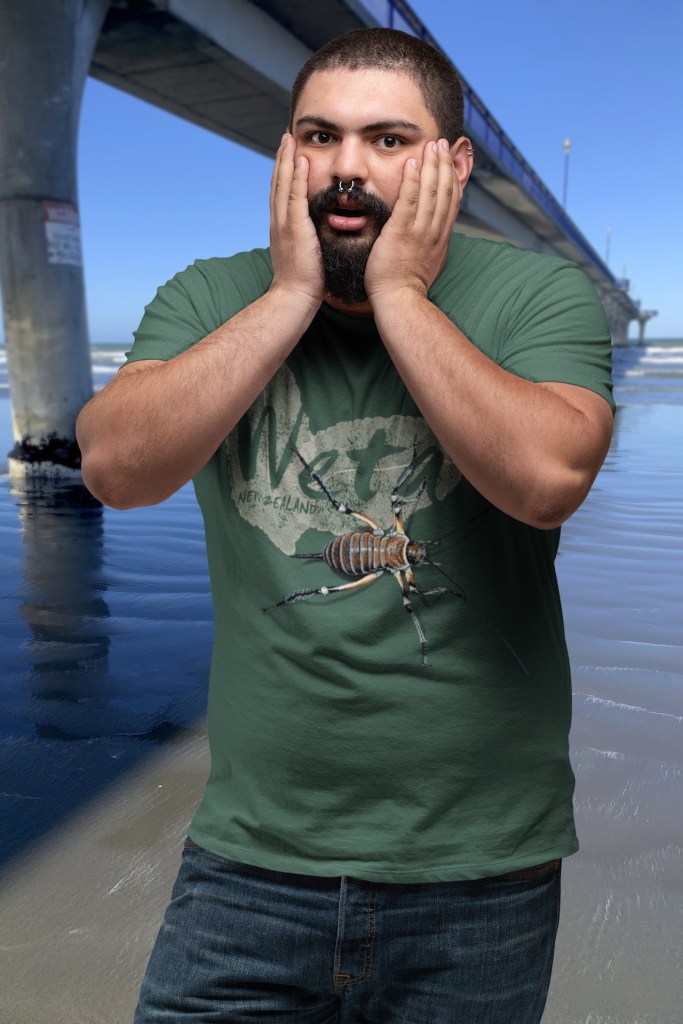
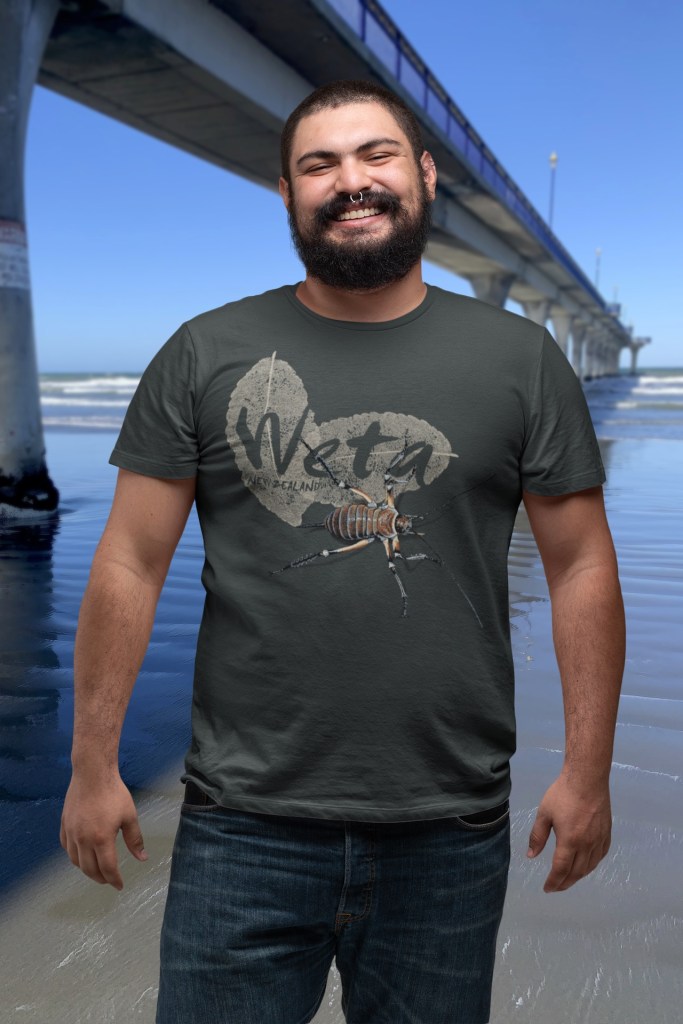
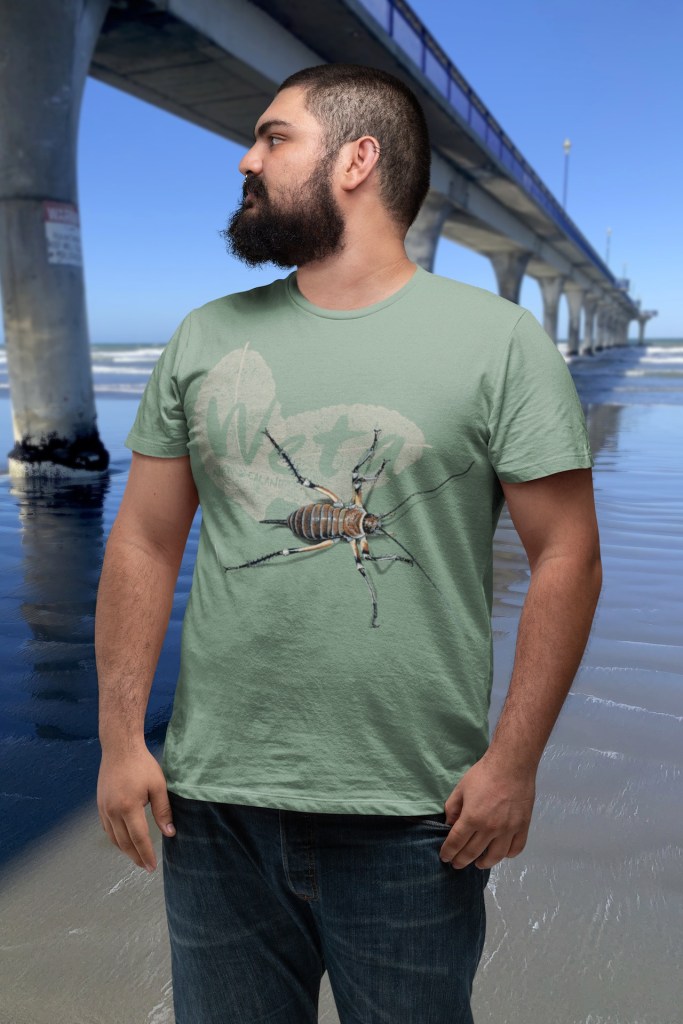


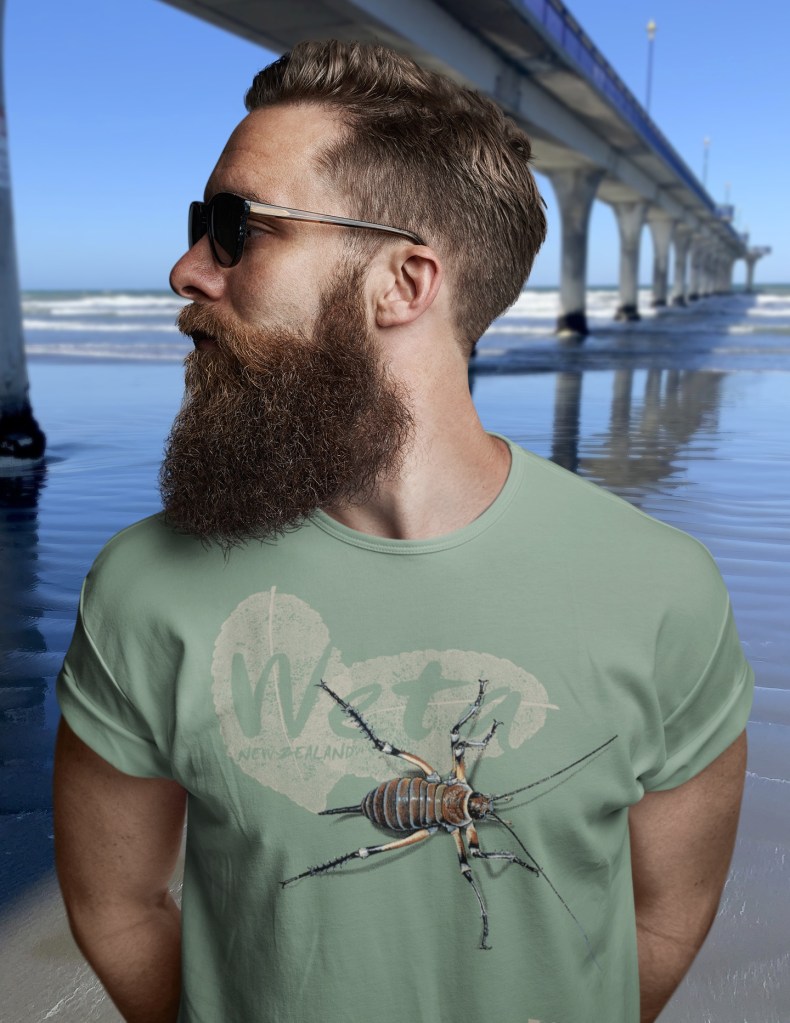
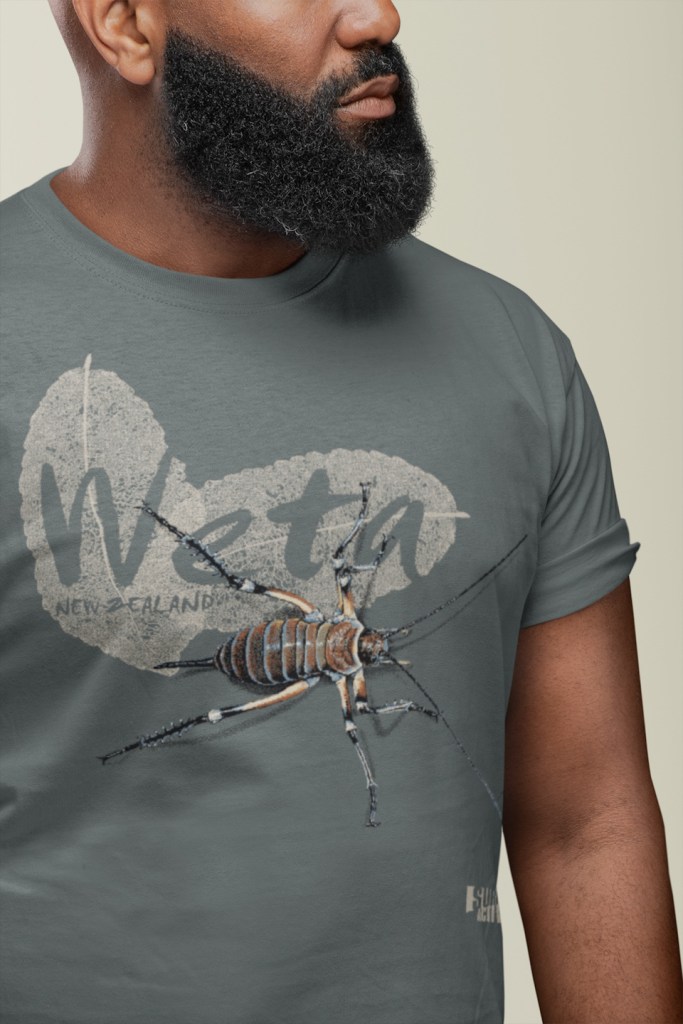
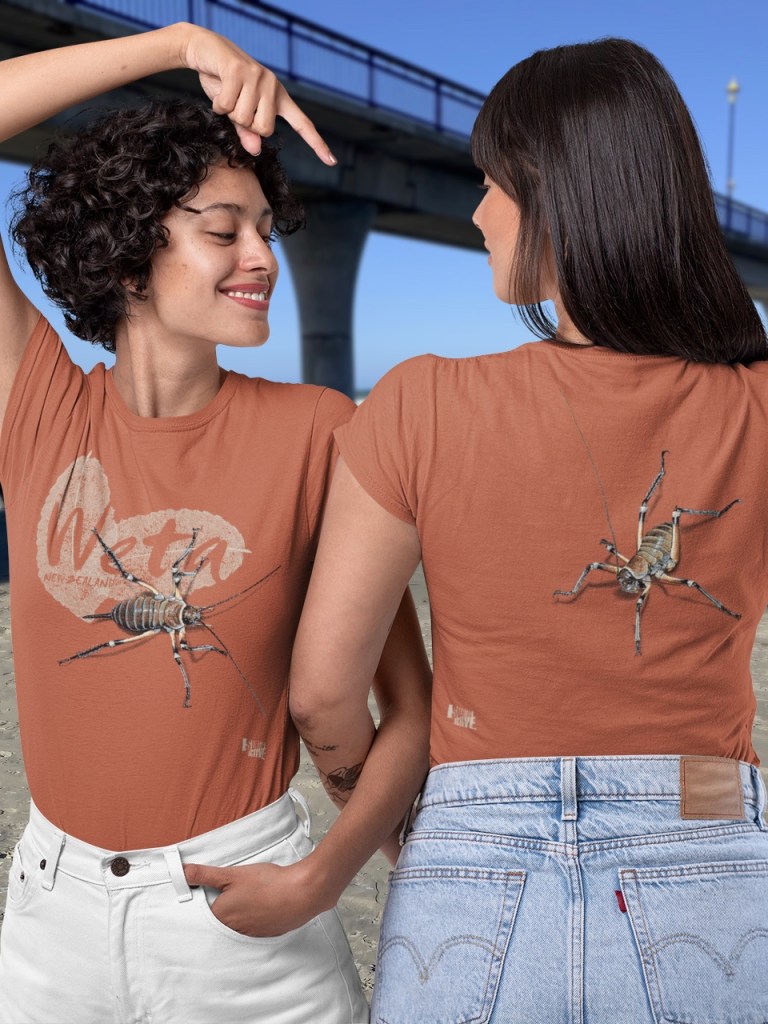
DTF (Direct to Film) Printing Offers a More Streamlined Method to Reproduce my Wildlife Artwork on T-Shirts Compared to Traditional Screen Printing. Here’s Why:
- Digital Design: I create a digital composite image on a transparent background using—in the case of the weta—the six-colour separations from my screenprinted artwork.
- DTF Printing: This digital file is then printed onto a special film using my local DTF print provider Merch Kings.
- Heat Pressing: I then place the printed film on the blank t-shirt the customer has ordered and heat press it onto the shirt. The heat activates the adhesive on the film, permanently transferring the design onto the fabric.
- DTF printing eliminates the need for multiple screens and labour intensive multicolour hand screen printing. DTF printing simplifies the printing process for reproducing my artwork on t-shirts.
Please Release Me: DTF (Direct To Film) Printing is the Streamlined Method to Print my Wildlife Art

The New Zealand Nature T-Shirt Company
